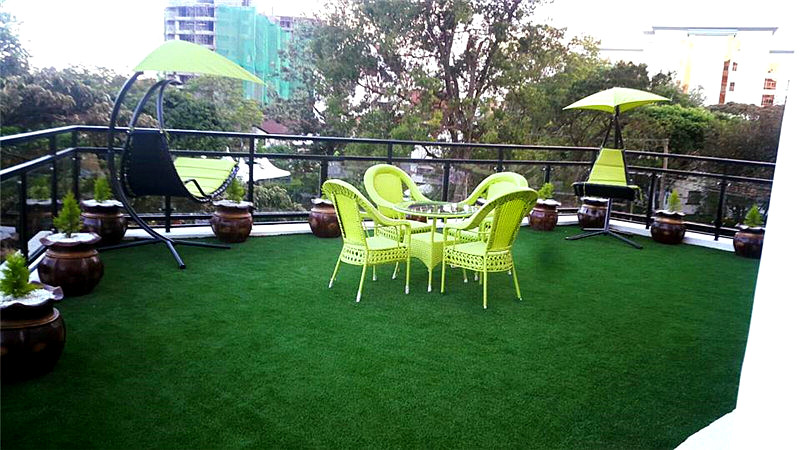In recent times, a remarkable shift is taking place in Kenya as more and more people are turning to artificial grass. This shift is driven by a multitude of benefits that artificial grass offers, especially suited to Kenya’s unique climate and market.
Traditional natural grass lawns come with their own set of challenges. Beyond the constant maintenance they demand, these lawns can pose risks to children, pets, and even the environment. The need for regular mowing, watering, and the application of fertilizers and pesticides can burden homeowners, particularly during dry periods. These practices can also lead to the contamination of soil, groundwater, and water bodies, impacting local ecosystems.
However, artificial grass provides a compelling alternative. It eliminates the need for excessive water consumption and the use of chemicals. This makes it an environmentally-friendly choice, conserving water resources and reducing the release of harmful substances into the surroundings. Not only does synthetic grass stay lush and green without the constant upkeep, but it’s also a safer option for children and pets. Harmful microorganisms, pesticides, and herbicides that can lurk in natural lawns are not a concern with artificial turf.
Safety and comfort extend beyond household use. Artificial grass is especially advantageous for sports and recreation areas. Its flat, level surface minimizes the risk of ankle, knee, and head injuries that athletes may encounter. Unlike traditional grass fields, synthetic turf provides a consistent playing surface, enhancing performance and safety for all types of players.
One of the key benefits of artificial grass in the Kenyan context is its ability to thrive in the local climate. The synthetic materials are designed to withstand the challenges posed by a dry climate, ensuring year-round greenery without the need for constant irrigation or maintenance. Additionally, the softness of artificial grass reduces the risk of injuries during play, making it an ideal choice for families and sports enthusiasts alike.
While the initial installation cost of synthetic turf may be higher compared to natural grass, the long-term savings become evident. With minimal upkeep requirements and extended durability, artificial grass proves to be more economically viable in the long run. Plus, by opting for artificial turf, individuals contribute to water conservation efforts and reduce their ecological footprint.
For those concerned about the aesthetics, rest assured that artificial grass can replicate the appearance of natural grass down to the last detail. Its versatility allows for customization, including different lengths and colors, ensuring a seamless integration into any outdoor space.
At Green Spot, the leading supplier of artificial grass in Kenya, we understand the specific needs of the local market and climate. Our high-quality products are tailored to thrive in Kenya’s conditions while providing the safety, convenience, and environmental benefits that artificial grass offers. Contact us today for free samples and a personalized quotation, and take a step towards a greener, safer, and more vibrant future with artificial turf.

